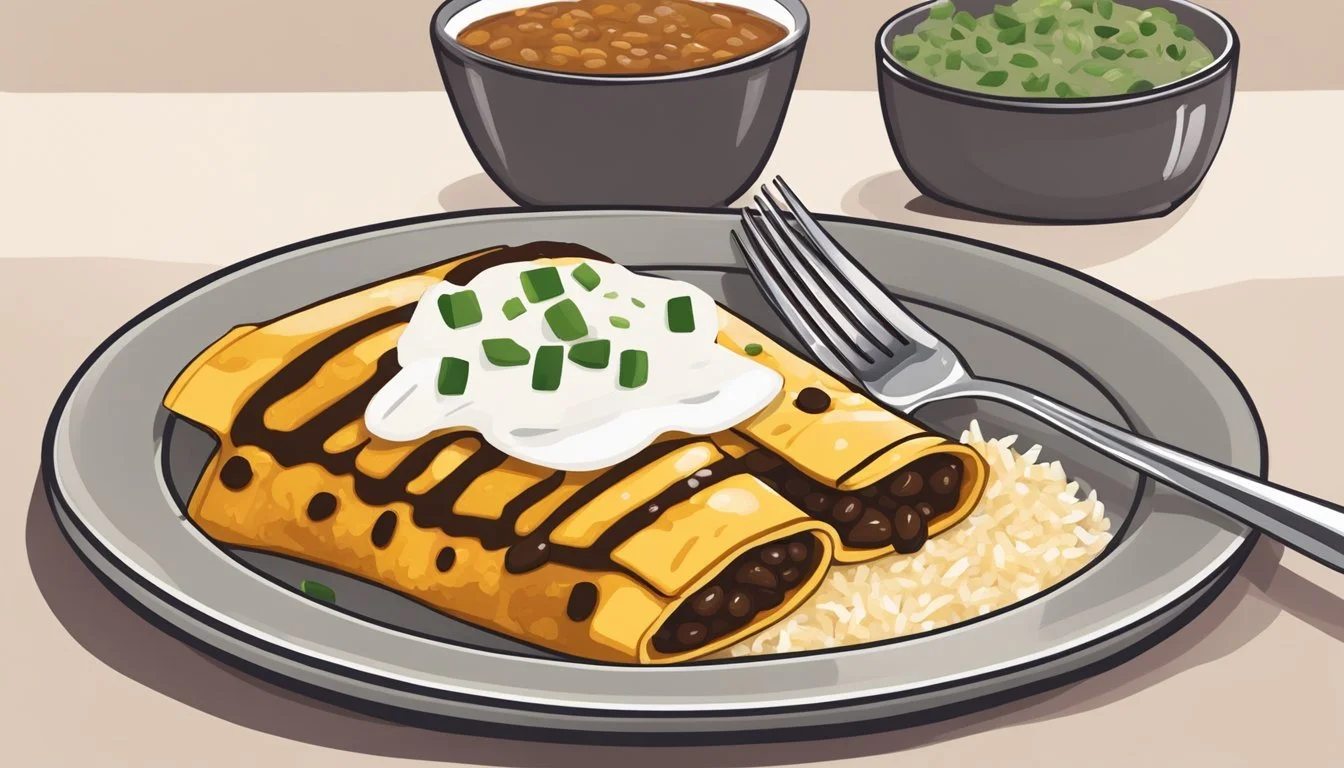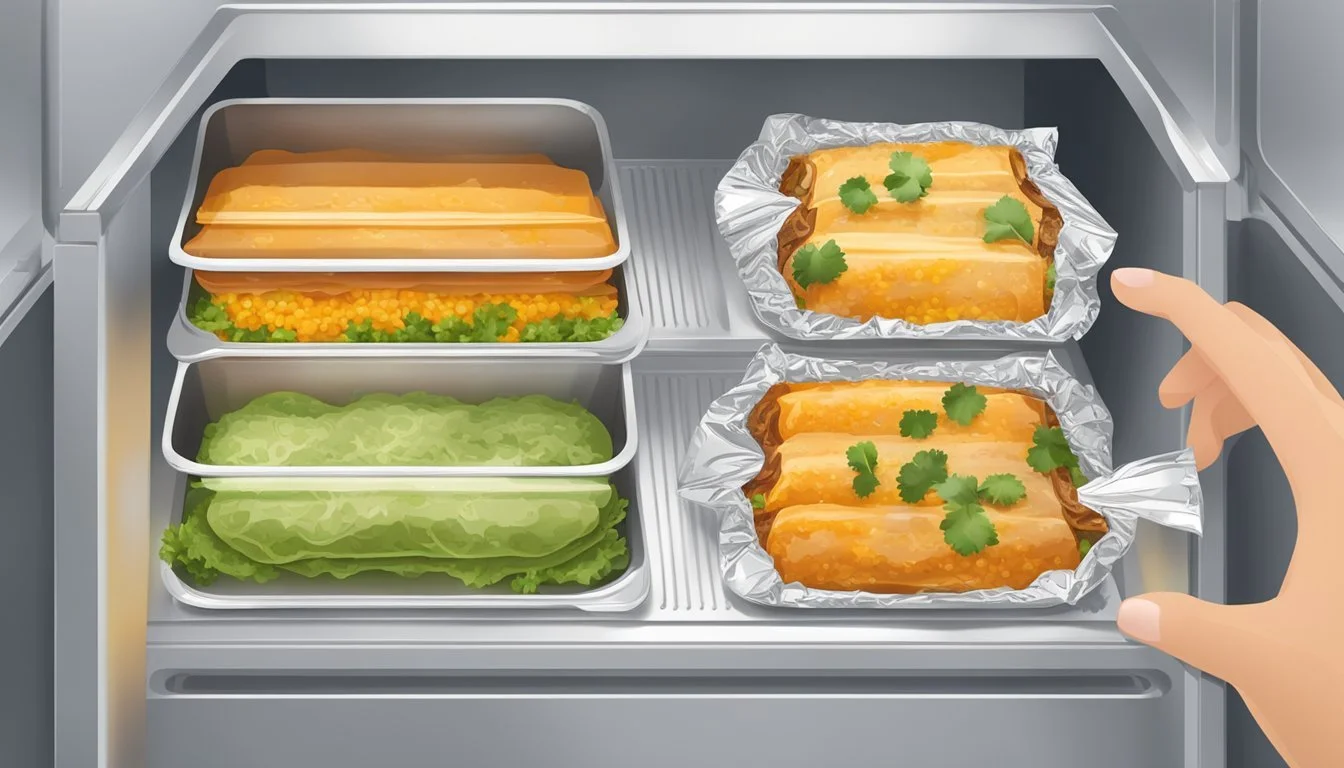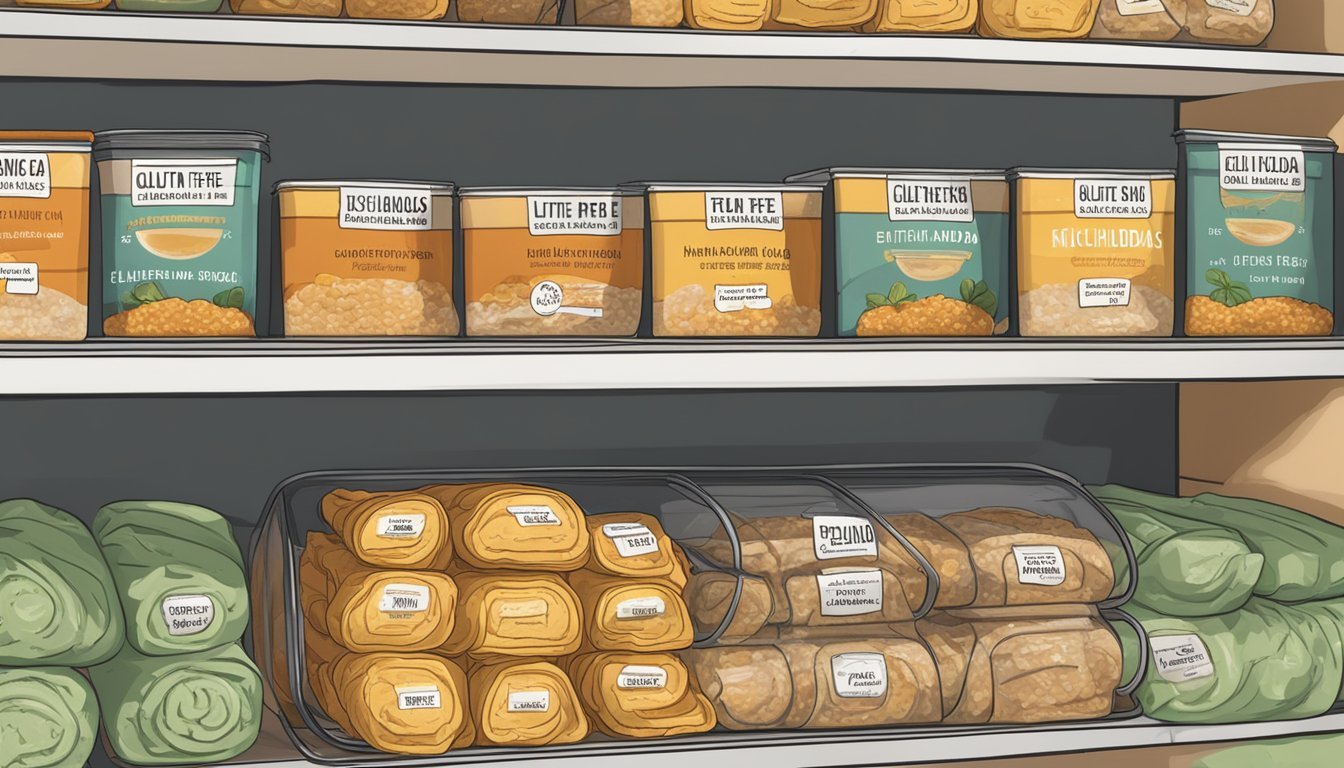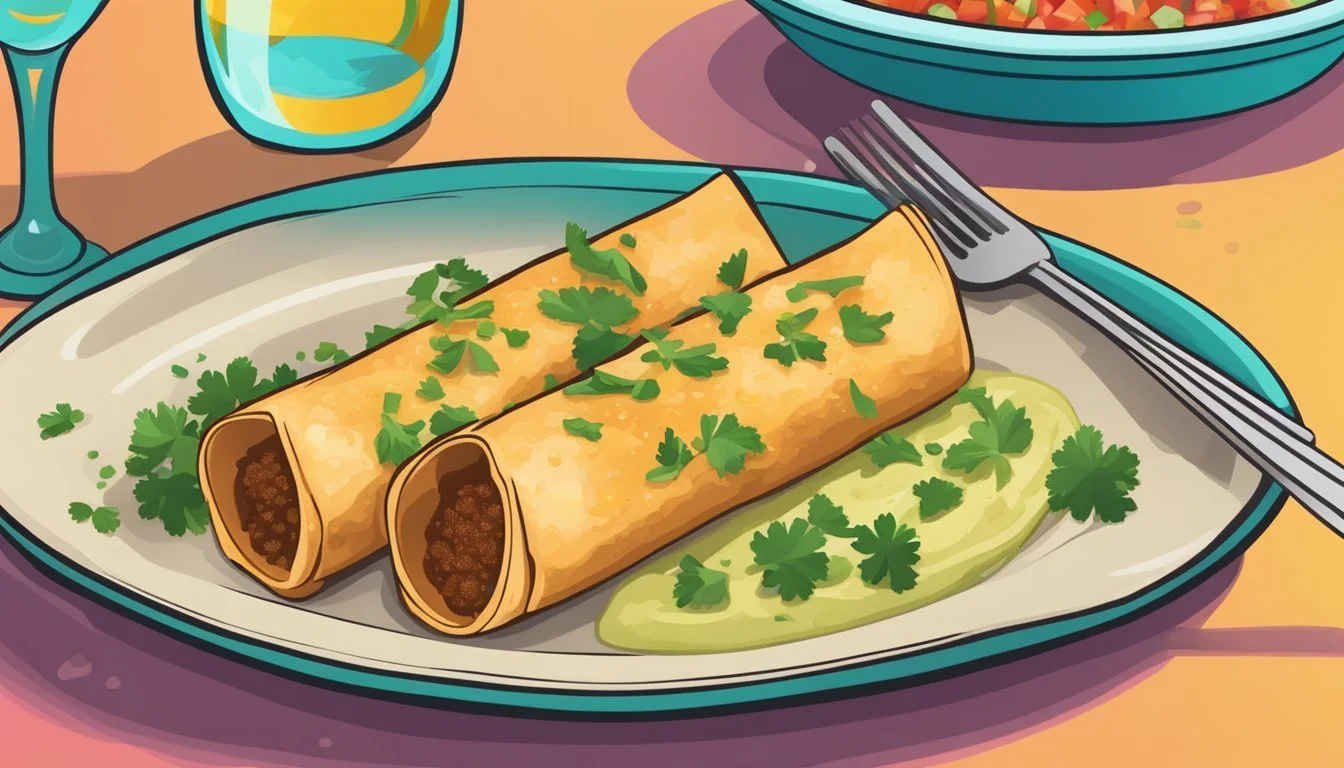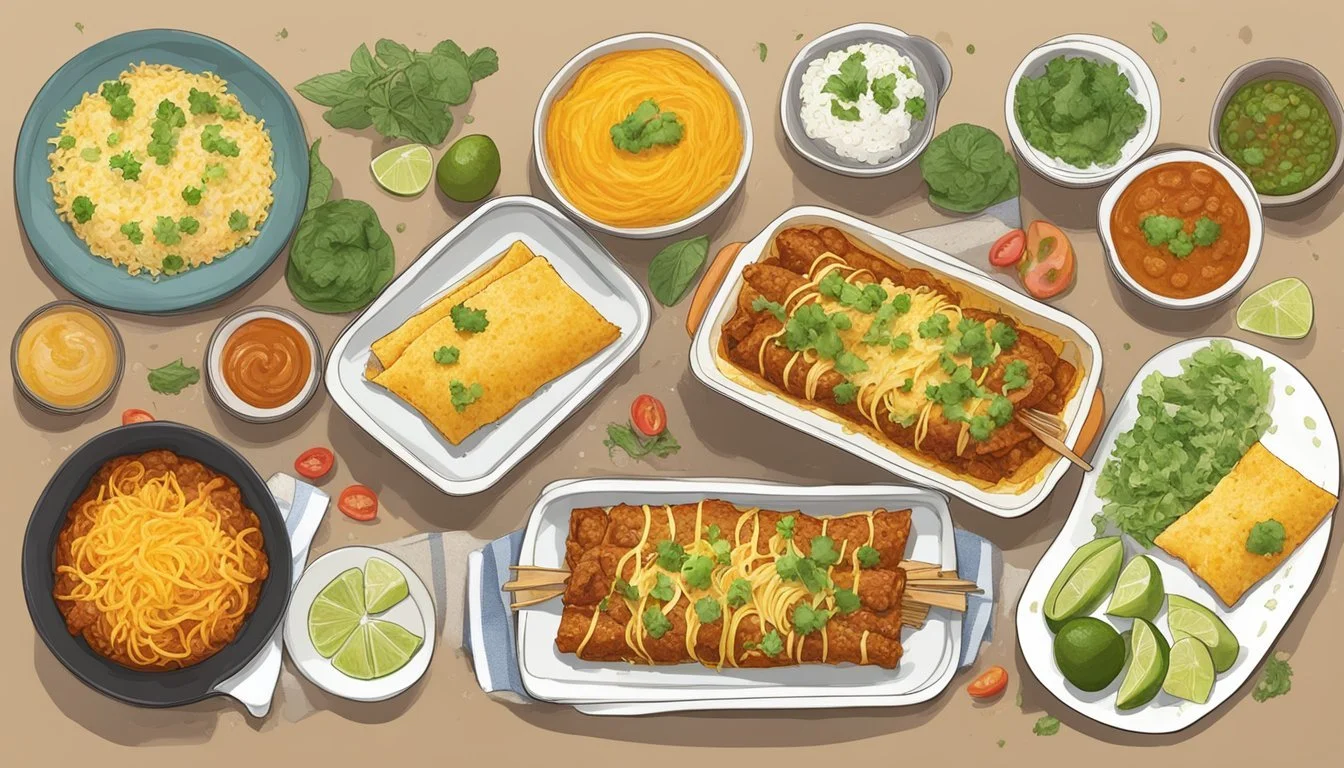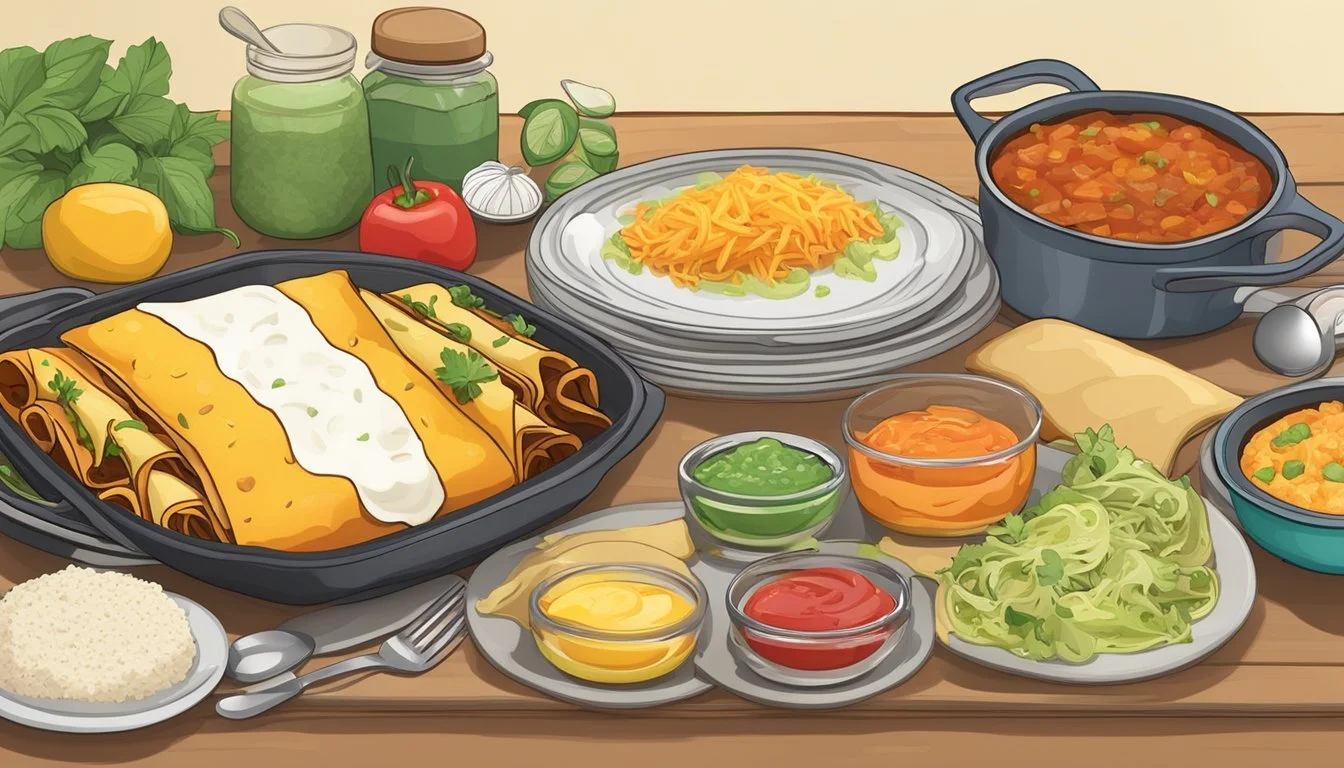How Long Do Gluten-Free Enchiladas Last?
Storage Tips and Shelf Life
When preparing gluten-free enchiladas, whether using corn tortillas and a homemade gluten-free enchilada sauce or following your favorite recipe, understanding their shelf life is crucial for ensuring food safety and quality. Gluten-free enchiladas typically last up to 3-4 days in the refrigerator when stored properly in an airtight container. Any longer, and the risk of spoilage or degradation of taste and texture increases.
For those who wish to extend the life of their gluten-free enchiladas, freezing is a viable option. Freeze the enchiladas either before or after baking by carefully wrapping them in plastic wrap or aluminum foil, and then placing them in a freezer-safe container. When ready to enjoy, they can be thawed overnight in the refrigerator and reheated in the oven for a meal that tastes nearly as fresh as the day it was made.
Keeping these guidelines in mind will help you enjoy your delicious gluten-free enchiladas without worry, allowing you to focus on the rich, satisfying flavors of this classic dish. Whether you’re using your own recipe or following one from a trusted source, proper storage ensures you make the most of every bite.
Understanding Gluten-Free Enchiladas
Gluten-free enchiladas, whether made with chicken, beans, or cheese, involve specific ingredients and dietary considerations. Choosing gluten-free tortillas and understanding their health benefits are crucial.
Ingredients and Substitutes
The primary ingredients include chicken, cheese, beans, and red or green enchilada sauce. Shredded chicken is preferred for its texture and protein content. Cheese provides a rich taste and can be substituted with dairy-free options for those with lactose intolerance.
Refried beans add fiber and a creamy texture. Enchilada sauce, often homemade, enhances flavor. Alternative ingredients like tofu or vegetables can be used for vegan versions. Ensuring all components are gluten-free is essential for those with gluten intolerance.
Health Benefits
Gluten-free enchiladas can be nutritious. Chicken offers high-quality protein, vital for muscle repair. Beans contribute fiber, aiding digestion, and essential minerals like iron. Cheese provides calcium and vitamin A, important for bone health and vision.
Corn tortillas are naturally gluten-free and rich in fiber and potassium. Together, these ingredients form a balanced meal offering vitamins and minerals like vitamin C and iron. For those with dietary restrictions, gluten-free and dairy-free options ensure broad suitability.
Gluten-Free Tortillas Selection
Selecting the right tortillas is vital. Corn tortillas are naturally gluten-free and preferred for their texture and pliability. When buying, ensure they are labeled gluten-free to avoid cross-contamination.
Flour tortillas, typically containing gluten, have gluten-free versions made from alternative flours like rice or cassava. These should be checked for texture and taste to ensure they complement the enchiladas. Proper selection guarantees the meal is safe and enjoyable for those with gluten sensitivity.
Preparation Techniques
Making gluten-free enchiladas involves several important steps to ensure they are flavorful and satisfying. These steps include creating the filling, applying the sauce, rolling the tortillas, and baking them to perfection.
Creating the Filling
To prepare the filling, start by heating olive oil in a skillet. Sauté finely chopped onion and garlic until they are tender and flavorful. Add chicken breast or ground beef, seasoning with salt, pepper, and cumin for a robust flavor profile.
For a vegetarian option, consider using black beans and bell peppers. Once your protein is cooked through, mix in a portion of your enchilada sauce (about 1 cup) to keep the filling moist and well-integrated.
Ensure the mix is warm but not overly wet to make rolling easier.
Rolling and Sauce Application
Warm gluten-free corn tortillas in a skillet to make them pliable. Place a spoonful of the filling along one edge of the tortilla, making sure not to overfill.
Roll the tortilla tightly and place it seam-side down in a casserole dish. Continue this process until your dish is full. It's essential to keep the tortillas snug in the dish to prevent them from unrolling during baking.
Once all enchiladas are rolled, pour the remaining enchilada sauce evenly over the top. Sprinkle shredded cheese generously over the sauce for a melted, bubbly topping.
Baking Considerations
Preheat the oven to 350°F (175°C). Place the casserole dish in the middle rack to ensure even cooking. Bake for about 20-25 minutes or until the centers are hot and the cheese is melted and bubbly.
If you prefer a golden, crispy top, broil for an additional 1-2 minutes. Be careful not to overbake, as gluten-free tortillas can become dry. Allow the dish to cool slightly before serving to let the flavors meld together.
Serve warm with a side of fresh salsa or guacamole for an extra burst of flavor.
Storage and Shelf Life
Gluten-free enchiladas, when stored correctly, can maintain their quality for several days in the refrigerator or for months in the freezer. Proper storage includes using airtight containers and considering the ingredients used, such as cheese and sour cream.
Refrigeration
When storing gluten-free enchiladas in the refrigerator, place them in an airtight container to keep them fresh. Typically, they remain good for about 3-5 days.
If sour cream is part of the enchiladas, it is best added right before serving to avoid sogginess. Additionally, ensure that the enchiladas are completely cooled before refrigerating to prevent condensation, which can lead to a mushy texture.
Freezing and Thawing
For longer storage, gluten-free enchiladas can be frozen. Use a freezer-safe baking dish or wrap the enchiladas tightly with plastic wrap and aluminum foil. They can be stored for up to 3 months in the freezer.
When ready to use, thaw enchiladas overnight in the refrigerator. Alternatively, they may be defrosted in the microwave using a suitable setting. After thawing, reheat them in the oven at 350°F (175°C) until heated through to maintain texture and flavor.
Serving Suggestions and Pairings
Gluten-free enchiladas can be enhanced with the right accompaniments and beverages. Pairing tips can boost the taste and appeal of your meal.
Accompaniments
Rice: Spanish rice or cilantro lime rice complements enchiladas perfectly. The subtle flavors of the rice balance the richer enchilada sauce.
Salad: A fresh, crisp salad with mixed greens, tomatoes, cucumbers, and a light citrus vinaigrette adds a refreshing contrast to the savory dish.
Guacamole: This creamy dip made from ripe avocados, lime juice, and fresh cilantro enhances the flavor and texture of the enchiladas.
Tortilla Chips: Crispy tortilla chips served with salsa or queso are great side items that add crunch.
Garnish: Sprinkle fresh cilantro and chopped green onions on top for a burst of flavor and color. Optional toppings like sour cream or a squeeze of lime juice can be added for extra zest.
Wine and Beverage Pairings
Wine: A zesty Sauvignon Blanc or light Pinot Noir pairs well with enchiladas. The acidity of the wine cuts through the richness of the cheese and sauce, enhancing the meal.
Beer: A light lager or Mexican cerveza such as a Corona or Modelo complements the flavors without overpowering them. These beers are refreshing and go nicely with spicy foods.
Non-Alcoholic: Sparkling water with a twist of lime or iced hibiscus tea are good non-alcoholic options. They provide a refreshing contrast to the hearty enchiladas without adding bitterness.
Fresh Juices: Freshly squeezed limeade or watermelon juice offers a sweet and tangy pairing. These juices enhance the flavor profile without being too heavy.
Whether serving for a weeknight dinner or a special gathering, proper pairings can elevate your gluten-free enchiladas to the next level.
Recipe Variations and Ideas
Gluten-free enchiladas can accommodate numerous variations to cater to different tastes and dietary preferences. This section highlights some possible ingredient swaps and variations on traditional recipes.
Ingredient Swaps
Using different ingredients can add diverse flavors and textures to gluten-free enchiladas. Some common swaps include:
Protein Alternatives: Traditional shredded chicken can be replaced with beef for a heartier meal, or refried beans for a vegetarian option.
Cheese Varieties: Instead of the usual cheddar, try using Monterey Jack or a Mexican cheese blend.
Sauce Options: Opt for a green chili sauce instead of red enchilada sauce for a tangier flavor.
Vegetables can also be added or swapped. Consider using zucchini, bell peppers, or corn. For those trying to avoid dairy, nutritional yeast can replace cheese for a similar taste.
Alternate Gluten-Free Enchilada Recipes
Several variations of gluten-free enchilada recipes cater to different preferences:
Chicken Enchiladas: Combines shredded chicken with a mix of spices and enchilada sauce.
Beef Enchiladas: Uses seasoned ground beef or shredded beef for a robust flavor.
Vegetarian Enchiladas: Incorporates vegetables like spinach, mushrooms, and black beans for a lighter, plant-based option.
For a twist, consider making a gluten-free enchilada casserole. Layer tortillas, filling, and sauce in a baking dish for a comforting meal. Alternatively, gluten-free tacos or gluten-free chili can inspire new variations of enchiladas.
Experimenting with these ideas can create a variety of delicious and satisfying gluten-free meals.
Kitchen Tools and Equipment
When preparing gluten-free enchiladas, several essential kitchen tools and pieces of equipment are required. A casserole dish is vital to hold the enchiladas during baking. This dish should be large enough to fit all the rolled tortillas snugly.
Preheating the oven to the appropriate temperature ensures the enchiladas cook evenly. For reheating leftovers or quickly warming the tortillas, a microwave is quite handy.
Using high-quality cooking utensils such as spatulas and tongs can help in managing and flipping tortillas without breaking them. Moreover, having a mixing bowl for combining ingredients like shredded chicken, beans, and cheese is necessary.
A measuring cup helps in accurately portioning out ingredients like enchilada sauce. Cooking oil and a large skillet are needed to sauté vegetables and warm tortillas to make them pliable for rolling.
A cheese grater proves useful if the recipe calls for freshly grated cheese. Additionally, aluminum foil can be used to cover the casserole dish during baking if specified in the recipe.
Proper storage containers are crucial for any leftovers. Airtight containers will keep the enchiladas fresh in the refrigerator or freezer.
These tools and equipment ensure that the process of making gluten-free enchiladas is smooth and efficient.
Health and Dietary Considerations
When preparing gluten-free enchiladas, it is important to consider both their caloric content and potential modifications for individuals with specific allergies. This can help meet various dietary restrictions without compromising on taste or nutrition.
Caloric Information
Gluten-free enchiladas can vary in caloric content based on the ingredients used. Typically, one serving of chicken and black bean gluten-free enchiladas can contain 300-400 calories.
Factors influencing calorie count include:
The type and amount of cheese
Use of regular or reduced-fat cheese
The presence of additional ingredients such as avocados, which add healthy fats but also additional calories
It's essential for those monitoring their calorie intake to consider these factors. Opting for lean proteins like chicken or turkey can also help reduce overall caloric content. Individuals aiming for a lower-calorie meal might replace cheese with plant-based or lower-fat alternatives.
Allergy-Friendly Modifications
Gluten-free enchiladas can be adapted to suit various dietary restrictions and allergies. For those with dairy allergies, substituting traditional cheese for dairy-free alternatives like nut-based or soy cheese is recommended. It's crucial to check labels to ensure these substitutes are free from gluten as well.
Those with multiple allergies might consider recipes that exclude common allergens like soy, nuts, and dairy. Ingredients such as labneh can be swapped with cashew cream to maintain a creamy consistency without using dairy.
Additionally, tortillas can be selected based on specific allergen needs, choosing from corn, almond flour, or cassava flour varieties to ensure they are free from gluten and other potential allergens. This careful selection ensures that the meal is not only gluten-free but also safe for other dietary restrictions.
Tips for Perfect Gluten-Free Enchiladas
Use High-Quality Enchilada Sauce
For a rich and flavorful dish, opt for a high-quality enchilada sauce. This can make a significant difference in taste. If possible, consider making a homemade enchilada sauce to control the ingredients and avoid gluten cross-contamination.
Corn Tortillas are Key
Gluten-free enchiladas typically use corn tortillas. Make sure they are fresh and pliable. Warming the tortillas briefly in a pan helps prevent cracking during rolling.
Flavorful Fillings
Balance the flavors of your fillings. Shredded chicken, beef, black beans, and vegetables like bell peppers and onions work well. Cook your filling ingredients with spices such as cumin, chili powder, and oregano for a robust taste.
Cheese and Toppings
A generous amount of shredded cheese is often added on top before baking. It helps create a delicious crust. Toppings like sliced avocado, chopped cilantro, and a dollop of sour cream can enhance both flavor and presentation.
Ingredient Key Tips Enchilada Sauce Use homemade or high-quality brands Corn Tortillas Warm them to avoid cracking Fillings Ensure a balance of flavors Cheese and Toppings Add cheese for baking, fresh toppings post-bake
Consistency Matters
Ensure that the enchilada sauce has the right consistency—not too thick or too watery. A proper balance ensures even coating and baking, leading to perfectly moist enchiladas.
Bake Carefully
Bake the enchiladas in a preheated oven until the cheese is melted and bubbly. Typically, this takes about 20-25 minutes. Keep an eye on them to avoid overcooking, which can dry them out.
Following these tips will help create delicious, gluten-free enchiladas that everyone can enjoy.

